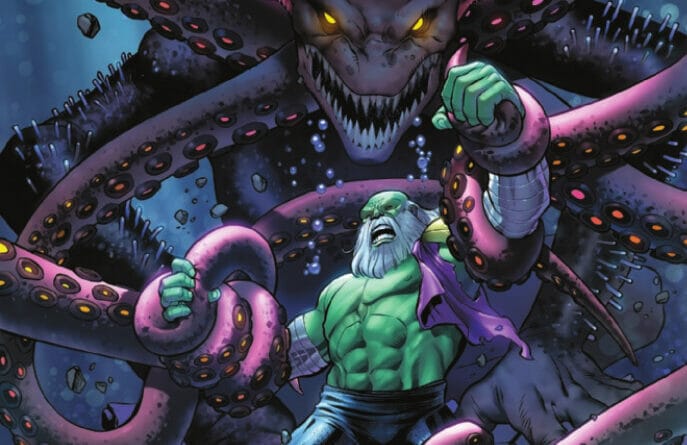Spoilers Ahead For Maestro: World War M #2
One of the greatest threats within the Marvel universe has returned. The limited series ‘Maestro: World War M’ marks the third and final chapter within the Maestro Hulk’s origin series. Writer Peter David returns to detail how this villainous member of the Banner system secured his reign of this post-apocalyptic Earth.
The Maestro has been making his way through a hit list of the strongest players in the Marvel Universe, taking down characters such as M.O.D.O.K and the A.I.M corporation. So close to securing his total rule over the world, old enemies such as the Abomination and Namor the Sub-Mariner have returned, as well as the Human Torch, now going by James.
Maestro is now out for revenge against this alliance that has attacked him. The Human Torch has unknowingly led him to the bottom of the Pacific Ocean following their confrontation. Having now found the underwater city of Pacifica, it is time for Namor’s new alliance with the Abomination to go head to head with the might of Maestro. Writer Peter David, penciler German Peralta, colour artist Jesus Aburtov and letter VC’s Ariana Maher come together to detail the final battle for the world of Future Imperfect.
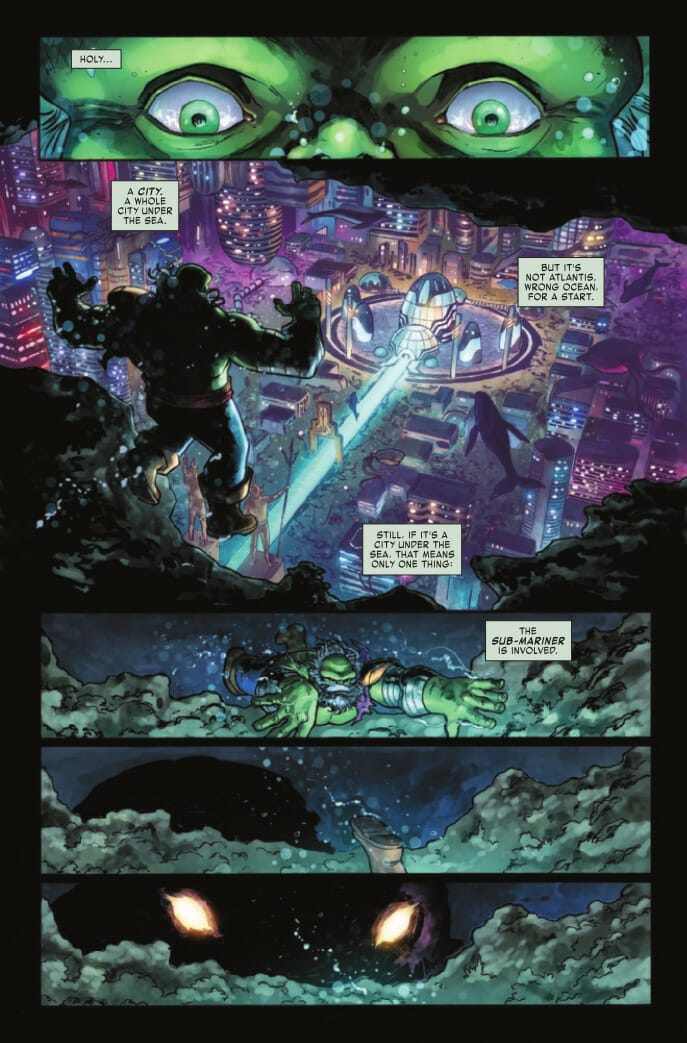
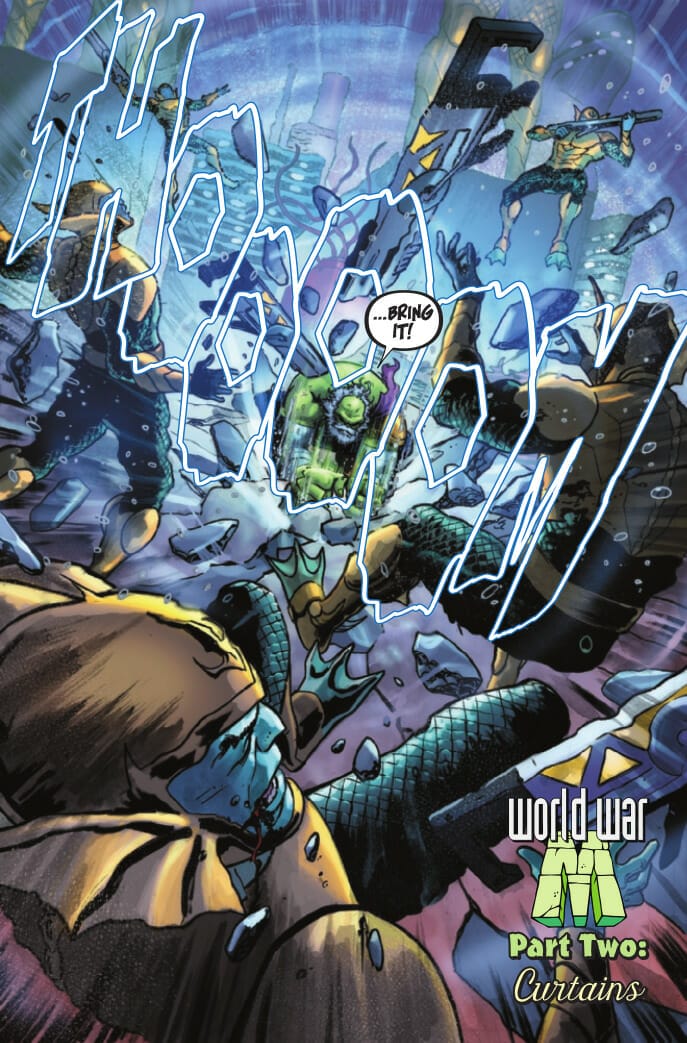

A strange element of the book’s writing is the introduction of Doctor Doom in its final pages. Before Maestro’s battle with Namor can truly commence, the alliance is teleported to Doom’s castle in Latveria. An old and battered Doctor Doom stumbles out of the shadows, demanding the trio help him gain revenge on the Maestro before his legs buckle and he falls to the floor.
Whilst a good entrance for the character, it is somewhat stunted by the fact that Doom is depicted as saying “Oh #%$@–” once he realizes he is going to collapse. Although it is fine for characters such as Doom to swear and use it for comedic effect, the use of coarse language in this instance takes away from the severity of Doom’s condition and the moment as a whole.
Rather than a serious moment of Doom desperately asking for help, it feels more like a skit. Besides, there is a much more natural, in character, moment of levity when Human Torch, whom Doctor Doom is following his collapse. Overall the joke feels unnecessary and it takes away from the feelings of suspense the interaction is attempting to instil and may come off as mocking those who aren’t fully physically able.
Regardless, this misstep is a small moment, and by no means undoes any of the quality writing through the rest of the book. Though this issue is fairly light on plot, mainly depicting the battle between Maestro and Namor in Pacifica, Peter David achieves a solid balance between action and moments of character writing. This sense of balance works due to the fact that it plays off the characterisation of Maestro and Namor.
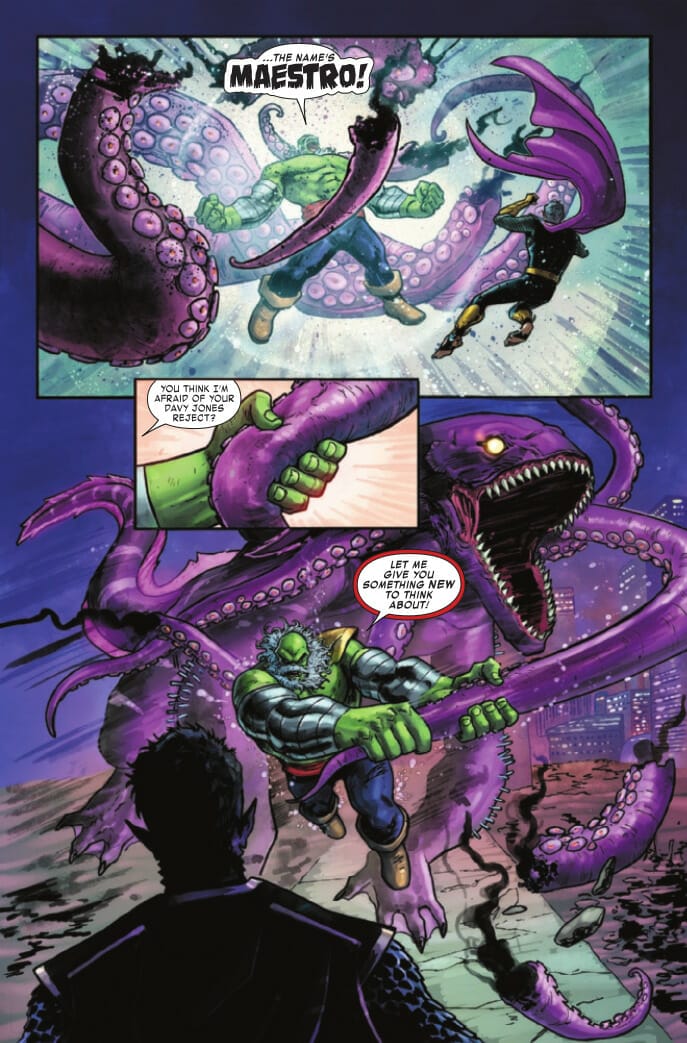

Both characters possess a great level of wit and pride, therefore they are in a conflict and clashing on a personal level before the first punch is even thrown. David presents a game of one-upmanship between the two, as they each lodge increasingly severe threats against one another. For example, Maestro mocks how Namor’s personal guard failed to keep him at bay for even a second, Namor then traps him in the grip of a massive sea monster, Maestro then threatens to kill Namor’s family, and so on and so forth.
Even if the fight between Maestro and Namor’s alliance was not able to commence this issue, the smaller instances of action throughout the book were still memorable due to the intriguing visual experience they offered. Due to the fight scenes taking place underwater, German Peralta was allowed to introduce new visual elements that wouldn’t necessarily be present in fights on land.
These elements mainly include a greater emphasis on the impact that each attack has on the combatants. The use of exaggerated shockwaves and the movement of water around the characters provides a greater sense of weight to the battles. Moreover, each character is allowed a wider range of motion and greater space to move as compared to on land, meaning the action scenes contain more dynamic poses and imagery.

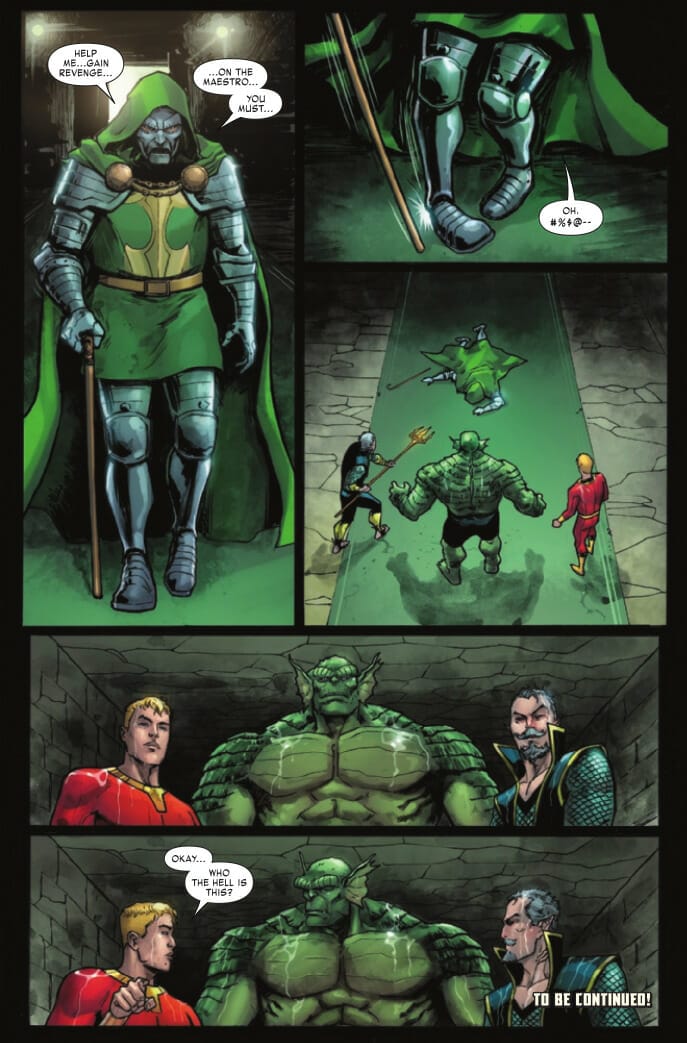
Peralta’s pencils also carry a great amount of detail with them. Allowing for the battle at Pacifica to hold a greater impact on the reader due to the level of grit and sense of realism surrounding the imagery. However, a huge compliment to the book’s pencils is the colour work by Jesus Aburtov. Aburtov details the underwater city with several vibrant shades of purple, teal and gold. The colouring of the city allows it to feel like an obvious separation from the bleak and dreary world on land as well as ensuring that the characters are highlighted in a dynamic fashion throughout the book.
Although the use of a comedic moment to display Doom’s new disabilities may come off as mocking, hopefully, this odd moment does not harm any readers and negatively affect the reputation of this series. Maestro: World War M issue two continues the action-packed final chapter of the Maestro’s origin trilogy.
Though not packed with advancements in the plot, this issue contained some dynamic action scenes that allowed the creative team to test out some intriguing visual techniques. The action within this book was simultaneously balanced with solid character work that assisted in fleshing out the rivalry between Namor and the Maestro Hulk. And sets up the titular ‘World War M’ to be one of the wildest conflicts the Marvel Universe has witnessed.
Want to discuss things further? Hit us up on Twitter, Facebook, or Instagram. For more film, gaming, anime, and comic book content; TV news, trailers, updates, and reviews, make sure to keep it locked right here at The Nerdy Basement. While you’re here, please consider supporting us on Patreon! It’s an easy way of supporting us so we can keep providing you with your Nerdy News!

